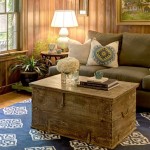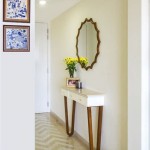Brother and Sister Sharing a Bedroom: Decorating Ideas
Sharing a bedroom is a common experience for many siblings. When a brother and sister share a space, creating a harmonious and functional environment that caters to both their needs and preferences presents a unique design challenge. Careful planning and creative decorating solutions can transform a shared room into a comfortable and personalized space for each child.
One of the most crucial aspects of designing a shared bedroom is establishing distinct zones. This helps create a sense of personal space within the shared room. Dividers, such as curtains, bookshelves, or screens, can effectively separate the sleeping areas. Different area rugs can also delineate individual spaces and add visual interest. Positioning beds on opposite sides of the room, or perpendicular to each other, enhances the feeling of privacy.
Color palettes play a significant role in setting the room's overall ambiance. Opting for gender-neutral colors offers a versatile backdrop for individualization. Shades of green, blue, grey, or yellow can be used as base colors. These neutral hues can then be accented with pops of color that reflect each child’s personality and preferences through bedding, artwork, and accessories.
Furniture selection should prioritize functionality and space optimization. Bunk beds are a popular choice for shared bedrooms, maximizing floor space while providing separate sleeping areas. Loft beds also offer a space-saving solution by incorporating a desk or play area underneath the elevated bed. If space allows, two twin beds provide each child with their own distinct sleeping zone. Consider incorporating storage solutions, such as under-bed drawers, wall shelves, and shared dressers or closets with designated sections for each child.
Creating personalized spaces within the shared room is essential for fostering a sense of ownership and individuality. Allow each child to select their bedding, artwork, and decorative accessories that reflect their interests and style. This allows for self-expression and contributes to making the shared space feel more personal.
Wall décor offers a creative outlet for personalization. One wall can be designated a shared “gallery wall” where each child can display their artwork, photographs, and cherished items. Chalkboard paint provides an interactive element that can be used for drawing, writing messages, or creating personalized designs. Removable wallpaper or wall decals are another option, allowing for easy updates as children’s interests evolve.
Lighting should address both functional and aesthetic needs. Individual bedside lamps provide focused light for reading or activities before bedtime. A central ceiling fixture provides overall illumination. Consider incorporating string lights or decorative lamps to add a touch of personality and create a warm and inviting atmosphere. Dimmers can also be helpful for adjusting the light level according to different activities and times of day.
Storage is a key consideration in any shared bedroom. Maximize vertical space by using tall bookshelves or wall-mounted storage units. Under-bed storage containers are excellent for storing clothes, toys, or other belongings. A shared dresser or closet can be organized with clearly defined sections for each child. Labeling drawers and shelves can help maintain order and prevent confusion.
Privacy is a paramount concern in shared bedrooms, particularly for older children. Curtains or room dividers can be drawn to create a sense of separation when needed. Designated study areas, equipped with desks and comfortable chairs, can provide a quiet space for homework or individual activities. Noise-reducing headphones can also be helpful for minimizing distractions.
Involving both children in the decorating process is crucial. This allows them to express their preferences and take ownership of their shared space. Collaboratively choosing colors, furniture, and decorative elements fosters a sense of compromise and cooperation. This joint decision-making process not only strengthens their bond but also helps create a room they both enjoy and feel comfortable in.
Maintaining a clean and organized room is essential for a harmonious environment. Establish clear expectations for tidiness and encourage both children to participate in regular cleaning routines. Designated storage spaces for toys, clothes, and other belongings help maintain order. Regular decluttering sessions can prevent the room from becoming overcrowded and overwhelming.
Creating a successful shared bedroom for a brother and sister requires careful planning and consideration of individual needs and preferences. By implementing these decorating ideas, parents can transform the shared space into a functional, comfortable, and personalized environment where both children can thrive.

Shared Bedroom Ideas For Brother And Sister Decor Kids

Brother Sister Bedroom Ideas Archives Pottery Barn

How To Create The Perfect Bedroom For Siblings Share Houzz Ie

24 Ideas For Designing Shared Kids Rooms Extra Space Storage
Shared Bedroom Ideas For Brother And Sister Decor Kids

Shared Bedroom Ideas For Brother And Sister A Crafty Spoonful

35 Shared Kids Room Design Ideas

Siblings Sharing A Bedroom

A Shared Bedroom For Brother And Sister
Shared Bedroom Ideas For Brother And Sister Decor Kids







